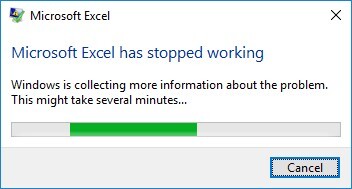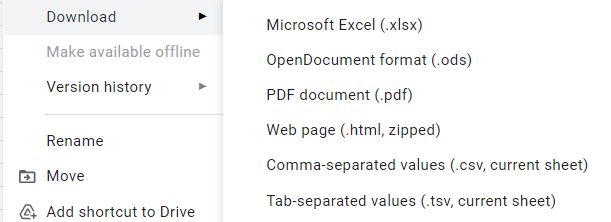Are the Spreadsheet Wars Back?
A breakdown of Google Sheets and how it compares to Microsoft Excel
It is hard to imagine, but waaaaay back in the 1980’s several spreadsheet programs were competing for market dominance in the field of finance. First was VisiCalc, followed by Lotus 1-2-3, and then a number of imitators (i.e. Multiplan, Quattro, etc.). Ultimately, with the launch of Windows, Microsoft’s Excel came to dominate the space from the early 1990s on. As a result, the war for spreadsheet dominance was all but over.
If you ask “hardcore” finance professionals if they have used spreadsheet programs other than Excel, you will likely scoff. Excel is where we have historically lived. But the spreadsheet winds may be changing, and an up-and-comer is challenging Excel’s long-held crown.
Google launched its online-only spreadsheet program Google Sheets in 2006. There was limited uptake initially, but user numbers increased with added functionality from key technology acquisitions in the early 2010s (adding online real-time collaboration and better mobile functionality). In recent months, Marquee has heard from more clients seeking spreadsheet & financial modeling training in Sheets. As might be expected, early users of Sheets included tech companies (that were already heavily immersed in the Google ecosystem), but uptake is reaching less likely firms (including the first meaningfully-sized bank this year!).
Given that you may be using Google Sheets yourself, or maybe hearing from clients that are; it is helpful to understand some of the key benefits and shortcomings of Sheets.
The Well-Known Benefits of Google Sheets
- The Price is Right: Sheets is free to use for anyone with a Google account.
- Seamless Online Collaboration: Though Excel has upped its game in recent years with its online Excel 365 offering, Sheets has had instant online changes for years. If you’ve ever worked in a Sheet with someone else live, you will know that it can be… Eerie.

- Constant Autosave: We’ve all been there. You’ve been working away on a piece of analysis in Excel for hours. It’s perfect. It’s beautiful. It would make the most hardened analyst weep with admiration. And then it happens…

- Easy Version Control: “I’m going to have to get you to go ahead and undo those two weeks worth of changes to the TPS Report template.” – Every Boss Ever
If you have ever had to roll back the clock on changes to a spreadsheet, you will know that it can be difficult if you haven’t saved multiple file versions along the way (or have Autosave activated in Excel). Sheets automatically maintains a version history (with no action necessary), and allows you to restore any historical version at any time. This can be a life saver. - Easy Integration with Excel: From the beginning, Google has taken the approach that Sheets must allow for a seamless transition from Excel to Sheets (and vice versa). And they have succeeded. Nearly every Excel file can be opened in Sheets, and every Sheet can be exported as an XLS file format.

- (Nearly) All of Your Favorite Excel Functions: The transition to Sheets from Excel is largely seamless. All of the basic Excel functions (SUM, MIN, MAX, AVERAGE, MEDIAN, COUNT, IF, SUMIF, SUMPRODUCT, VLOOKUP, HLOOKUP, INDEX, MATCH, etc.) work in Sheets and are entered in a format very familiar to anyone that works in Excel. In addition, certain features for more advanced analysis are available as well, including Pivot Tables!

Disadvantages of Sheets
- Less Customizable Charts: Nobody wants to stare at a grid of numbers when sitting around the boardroom table. Ultimately, all of our analysis gets boiled down into pretty charts. Excel has some amazingly customizable charts and a huge library of chart types to make your analysis fully customizable. Sheets does a proficient job, but falls short of the powerful customizability available in Excel (though it will work for 95% of the charts the average user would need to create).
- Power User Functionality: Microsoft has built out a suite of functionality for power users that works with large and complex data sets. Power BI, Power Query, and Power Pivot are indispensable for those that need them. While there are some creative hacks in Sheets to accomplish similar tasks, they are not as comprehensive or user-friendly as the tools available in Excel.

- Internet Connection Required: Some of my most productive hours in Excel were when I was on an airplane. The lack of distractions and the internet meant that I could get a lot done. As a consequence of the cloud nature of the program, Sheets requires an internet connection. I recognize there is internet on most planes and that there are browser add-ins that allow for offline Sheets work. It’s just not as seamless as the “download the file then work on it” approach of Excel.
- There is No “Center Across Selection” Formatting: Merging cells in Sheets is your only option, and even though it goes against one of our key principles of model building, it does cause fewer navigation and editing issues than the same option in Excel.

- Data Tables (Sensitivity Analysis) Isn’t There Yet: Excel’s data table tool (Data -> What-if Analysis -> Data Tables) is a very powerful tool for building sensitivity analysis. The lack of this feature in Sheets will make many finance tasks more challenging than in Excel.
In conclusion
We are barely scratching the surface. Keep your eyes peeled for future articles that will go into further detail on some of the less-known advantages of Sheets.
If you enjoyed reading this and want to improve your skills further, then try our Excel Best Practices Self-Study Course. You can also browse our other range of Self-Study Courses here.
Training The Street also offers a more advanced In-Person/Virtual Public Course called, Applied Excel. Where you can gain the skills needed for parsing, analyzing, and presenting information from large data sets.
